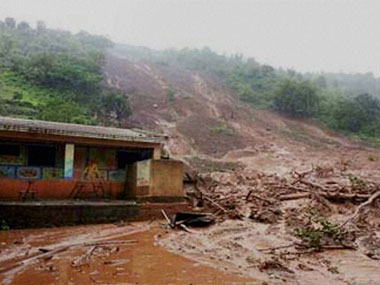Why should the Chief Minister, Prithviraj Chavan have to visit the site of the Malin landslide near Pune? And why should Union Home Minister, Rajnath Singh, have to put it on his itinerary? What purpose would the two worthies achieve apart from getting underfoot of the personnel involved in rescue and relief operations, and also distract the district administration from the task at hand. Such sensible questions never get an answer. When persons holding high office enter a disaster zone, local partymen to join in to trample on the accident site, elbowing out those engaged in the mammoth rescue operation. Chavan would have had his entourage in tow as if he was going to an official function and so will Singh today, which in turn encourages the photographers to descend on the place. Clearly the photo-ops are more important. It is unclear why the top honchos of a government have to instruct officials to conduct emergency relief operations which have set operating procedures for such cases. Maharashtra Times reported today how curious spectators and their vehicles jammed the route to the disaster site. That ensured an eight-kilometre long line of vehicles retarding the progress of even ambulances. [caption id=“attachment_1641577” align=“alignleft” width=“380”]  Over forty houses were buried in a landslide triggered by heavy rains at Malin village in Pune district, Maharashtra on Wednesday. PTI[/caption] The Indian Express has it that not only “frequent spells of rain hampered” the rescue work but “a huge crowd and hundreds of vehicle” actually “compounded problems”, quoting officials. Ambulances “had to wriggle out of the traffic mess” spread over 10 km. The location is “remote” despite being about 110 km from Pune. World didn’t know about it till a state transport bus routine went there and found the village swallowed up by mud. Not very complimentary for a village in a constituency which is geographically close to Pune, but seen as remote nevertheless. Such places are not easy to work in even in best of times because the distance from Pune leads to the lost golden hour – the first hour when maximum lives can be said. Heavy machinery has to be moved, and then ambulances, and if the crowd also consisted of volunteers who went to help, they went there too soon. Their work comes later. These onlookers cannot be blamed because political leaders impede the work in trying circumstances being carried out by disaster relief teams which, by any account, are far from the best in the world. What the leaders do without any trace of guilt, the ordinary folks mimic. These visits, either by ordinary or the very important people – important because of their place in the hierarchy, not because they bring any special skill except a penchant for shooting instructions – has come to be called ‘disaster tourism’. It has been seen after bomb blasts, fires, floods, landslides, train accidents and you name it. The size of the onlookers would be proportionate to the size of the disaster or its significant difference to the routine that beset us. Landslides are not everyday occurrence, adding to the uniqueness of the situation. Imagine the time, effort, and manpower needed to clear the area of milling crowds. And through this melee the VIPs would have to be taken to the site. Or diversion of critically needed manpower to build helipads which in this case may be unlikely because of rains. If the politicos do visit the area, it is because they hope to show they are working after each disaster but it is rare, if at all, that they have used their positions or influence to help improve the disaster management methods if ever. Statements are all we get and all we’re likely to get in the future. If a senior politician visits such spots, immediately a ‘me-too’ visit by a rival is a natural follow up. They have not only got to go but have got to be seen going, which is ensured by a lot of fanfare. This the disaster zones can easily do without. The gawkers’ insensitivity is phenomenal. It doesn’t occur to them that abstaining from visiting it, however compelling the disaster’s draw, would facilitate speedier work and save lives. That tourists braved the rains shows their temerity; they didn’t realise tomorrow they too could be victims of a misfortune and suffer because someone else hindered the progress of rescue and relief work.
When persons holding high office enter a disaster zone, local partymen to join in to trample on the accident site, elbowing out those engaged in the mammoth rescue operation.
Advertisement
End of Article
Written by Mahesh Vijapurkar
Mahesh Vijapurkar likes to take a worm’s eye-view of issues – that is, from the common man’s perspective. He was a journalist with The Indian Express and then The Hindu and now potters around with human development and urban issues. see more


)
)
)
)
)
)
)
)
)



